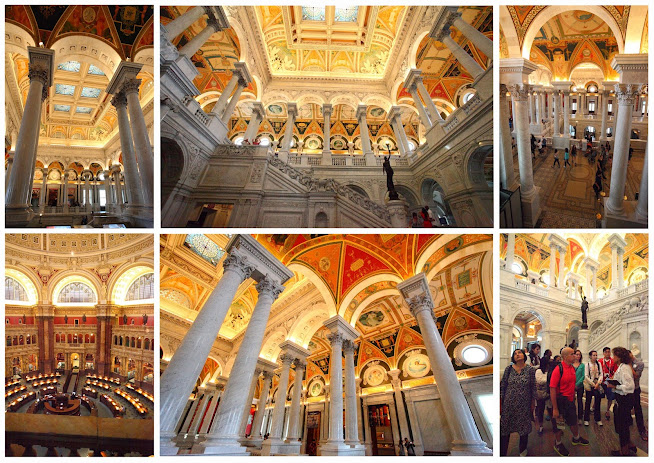Since arriving in the US, our Fulbright group was brought back to D.C.
by the UMD team from College Park via the metro, our first public transit ride
on the rail. The last time we saw Capitol Hill, it was at night. This time, we
got to visit the actual interior. It is evident that both the exterior and
interior of the heart of this top American Federal Institution was
designed with grandeur to fill visitors with awe.
 |
The most distinct landmark of D.C., the dome of the home of the Senate and House of Representatives |
Within the interior, there are many statues of individuals who have made
significant impact on American history. I noted two: Abraham Lincoln and Ronald
Reagan (pictures below). Of course Franklin D. Roosevelt has made great impact on
America during the Great Depression years but the legacy of Lincoln and Reagan has been
very far reaching. The former brought an end to slavery under utmost
difficult circumstances, the latter was instrumental (together with Margaret Thatcher)
in bringing down the Berlin Wall and the Eastern Bloc. Both are not perfect, and both have had their respective critics. But both had the vision to believe in achieving the seemingly impossible.
I think Abraham Lincoln, in particular, is one of the greatest man ever
lived. The American Civil War was costly, with casualty estimated to be over
600,000 lives, and much of the infrastructure in the south destroyed or badly
damage. But the nation would have disintegrated had the north-south divide on
slavery issue remained. Lincoln lost his life for a cause he believed. In a
way, he was also a casualty of the Civil War, but that vision, a firm belief in what is good and right and an unwavering will are what made him great.
Other Landmarks
The Washington Memorial is currently under repair and restoration works
after an earthquake. I am disappointed that I will not be able to go up to the
top of this structure during my Fulbright stint in US.
The US Library of Congress is the oldest US cultural
institution (Picture below). The library is meant for use by the members of the Congress and high ranking officials of US government administrative and
judicial agencies. The interior decor is highly ornate and the images are
loaded with symbols representing bodies of knowledge and various disciplines.
During the tour, we were told that the library currently brings
approximately 22,000 publications (both digital and printed versions), of which
10,000 publications made it to the permanent collection after a selection
process. This collection growth rate is absolutely staggering!

















